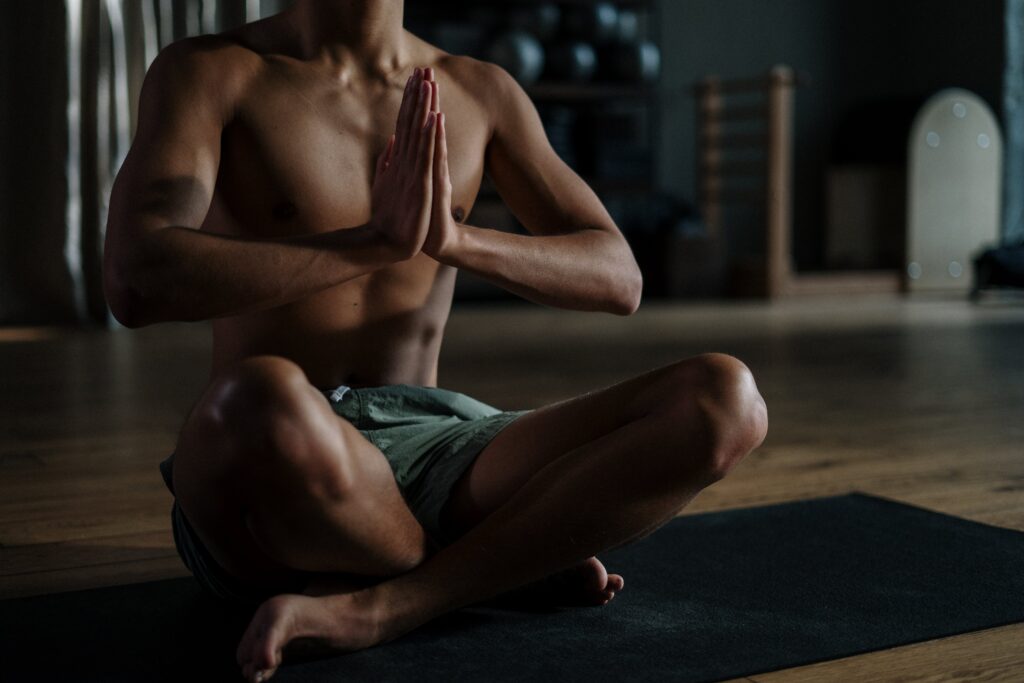Breathwork – meditating correctly starts with the breath, our breath influences how our body and mind relate to our surroundings. When meditating, it is important to focus on our breath, think how the swell of the sea moves high, washing up onto a sandy beach, only to wash back down the sand and then rise once again. This is a good way to think about how we should breathe during meditation. Breathe deeply and slowly inwards until capacity is reached, then exhale in the same slow, controlled way. This technique, although simple, naturally de-stresses the body and mind. Repeat this technique during the duration of your meditation.
Preparation – to meditate, it’s important that you relax. Meditation is best practiced after 3 hours of fasting (not eating) so the stomach is empty and the body can relax. The process of breaking down nutrients stresses our digestive system. Although not necessary for successful meditation, it may be easier to achieve a calming state by doing this. For a successful meditation, you should sit in a way that your spine is straight. This may be in a seat, or it may be cross-legged on the floor. Keep your spine, shoulders, and head in line. Place your hands in front of you in the centre, possibly on your lap. Eventually, your head may droop and this is natural and fine.
Environment – you should try to find a place that is quiet and peaceful. The front seat of a car, for example, may not be the best place to practice. Some people may wish to use ear plugs to create a quiet space that does not distract. Somewhere outside in nature may be best for some people, whereas on your bed at home may be fine for others.
How – now you know how to sit and how to breathe, find your quiet place. Spend 30 seconds with your eyes closed to let your mind clear of all thoughts. Thoughts come and go like the wind. The practice of meditation is to let them go without holding onto them. Feel your muscles, shoulders, back, relax, make yourself like jelly. Now you are ready to meditate. Focus on your breath, slowly breathe in and then out, relax your body as you do this. Let any thought that enters your mind enter, then simply let them go, clear your mind, focus on your breathwork. Let the thoughts flow away so you only consciously think about your breathing, feel the air enter your body, then go again. Let the thoughts slide away so you are thinking about nothing.
How long – The first time you practice this, it may seem like the longest 10 minutes of your life. It is incredibly hard not to consciously think for that long, especially when today’s world is so interactive and stimulating all the time. You are looking to meditate for 10 minutes for your first time. Once you have become comfortable with doing this once a day, it is best to practice twice a day, once in the morning before breakfast and once in the evening. If you feel comfortable doing this twice a day straight away, then absolutely do it. Some people will find the practice hard to maintain at first. Consistency is the key to slipping into a meditative state. The more you train this skill, the easier it becomes. It may be noted that you could do a meditation at work on your break or anytime something is stressing you out. Just find a quiet place for 10-20 minutes and give yourself the space to practice this valuable skill.

